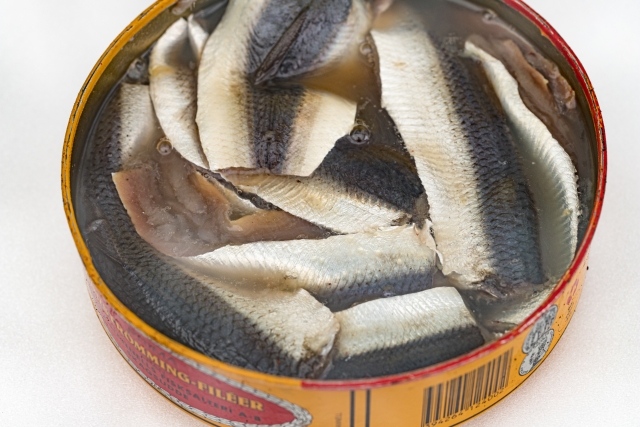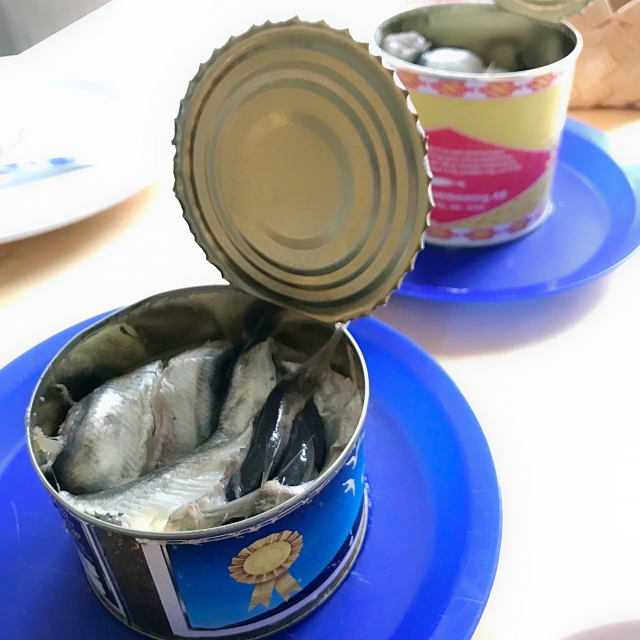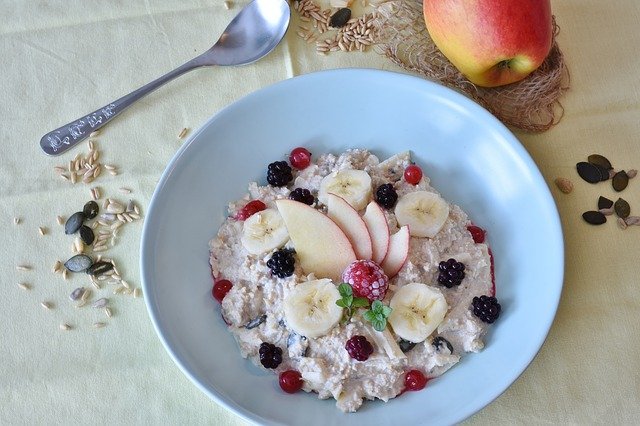Surströmming: Sweden’s Fermented Food Known as the World’s Smelliest Food

In Japan, there are many fermented foods with distinctive smells such as natto and kusaya. However, there is also a canned food called surströmming in Sweden, which has a very strong smell. Surströmming has been featured on Japanese TV shows from time to time, so some of you may already know the name.
In this article, I will focus on Sweden’s surströmming and provide a detailed introduction to its history, proper way of eating, and the cause of its smell.
What is Surströmming?

Surströmming is a Swedish fermented food made from canned salted herring. In Sweden, due to the long winters, preservation techniques such as salting and drying have developed, and surströmming was born in the northern part of the country as one of these techniques.
It was commercialized as canned food in the 19th century, but fermented salted herring has been consumed since the 14th century. In the 17th century, it was used as a food supply for the Swedish army. It is still a popular fermented food in Sweden, and the third Thursday of August every year is the official release day for surströmming.
However, the most significant feature of surströmming, for better or worse, is its intense fermented smell. People who have experienced it say it smells like putrefaction and has a sharp, sour, pungent odor. The name “surströmming” is a combination of the Swedish words “sur” (sour) and “strömming” (herring).
Its terrible smell is often considered the world’s smelliest food. I have never experienced it myself, but it may be impossible for anyone who cannot withstand the strong smell to eat it.
The cause of Surströmming’s smell
Surströmming, known as the world’s smelliest fermented food, has a particular reason for its terrible smell.
The cause lies in the cooking process. The ingredients and methods used for preserved foods vary by country, and salted, dried, or smoked foods are adapted to the climate and terrain of each country. In Sweden, agriculture was difficult due to the cold climate, but fishing has long been popular.
By soaking the cut pieces of the caught herring in brine, they prevented the growth of bacteria and spoilage, making it a preserved food for winter. Sweden has short daylight hours, making it unsuitable for producing solid salt by evaporating seawater, so they use brine instead of solid salt.
The cause of surströmming’s terrible smell also lies in this method of soaking in brine. In the case of solid salt preservation, the amount of free water used by microorganisms for growth decreases due to the action of salt, which weakens microbial activity and reduces the smell produced during the decomposition of food.
However, with the method of soaking in brine, as with surströmming, although spoilage is prevented by improved preservation, microbial activity continues, and fermentation progresses even after being canned. As a result, a large amount of odorous substances are produced by microbial decomposition, causing the can to swell and creating surströmming’s unique smell.
Precautions when opening

Surströmming’s intense smell requires careful attention when opening the can. The can is filled with gas from the fermentation of herring, making it dangerous to open as an ordinary can. The moment a hole is opened with a can opener, the liquid inside the can will splash out, along with the smell. If opened indoors, the smell can cling to furniture and walls, so it is generally forbidden to open surströmming indoors. The smell can also stick to clothing, which may need to be discarded in some cases.
The recommended way to open the can is to do so in a bucket filled with water, which minimizes the spread of the smell. As for clothing, it is advisable to wear a raincoat or clothes that can be thrown away if necessary.
Note that surströmming is generally not allowed to be transported by air due to the risk of explosion from changes in air pressure. When transported by air, it is strictly packaged as a hazardous material before being shipped. Therefore, surströmming available worldwide is mainly imported by sea. Although it may be somewhat expensive, surströmming can also be purchased through online shops.
How to eat Surströmming
Surströmming is a canned salted herring with a very salty taste. The can contains herring fillets, which are cut into bite-sized pieces for eating. In Sweden, it is common to wash the herring with high-alcohol beverages such as aquavit to remove the smell before eating.
Surströmming is typically eaten on thinly sliced bread, and side dishes such as mashed potatoes, butter, and cheese are often provided to soften the strong saltiness.
Conclusion
Surströmming is a Swedish-origin canned salted herring and is one of the most famous fermented foods worldwide. Its strong fermented smell when opened is said to surpass that of natto and kusaya, and it is recommended to open the can underwater.
Eating surströmming requires consideration for the surroundings and adherence to rules, but it is a food worth trying at least once.




